Published on July 30, 2025 by Filip
Last updated on September 3, 2025
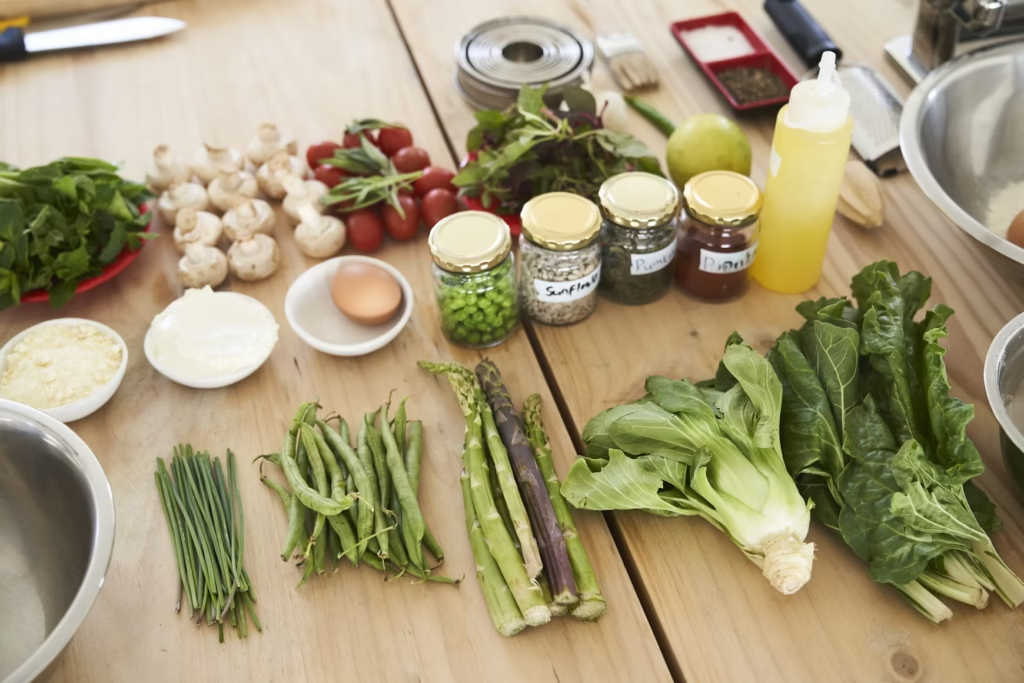
This guide covers the best kitchen tools for meal prep that actually help – whether you’re batch cooking for this week or portioning lunches – I got you covered.
The key to meal prepping is owning the right tools, because plastic lids and leaky containers won’t get you very far.
Everything here has been tested for real-world usefulness, and it will help you meal prep cleaner and faster. Let’s dive into it.
Detailed Overviews of The Best Meal Prep Kitchen Tools
Have an in-depth look at how these tools can alleviate your meal prep struggles.
Disclaimer: Product images shown are temporary placeholders. Once approved for the Amazon Associates Program, I will replace them with official Amazon images. As an Amazon Associate, I may earn from qualifying purchases made through affiliate links on this page.
1. Prep Naturals Glass Meal Prep Containers – Best for Smart, Stackable Storage
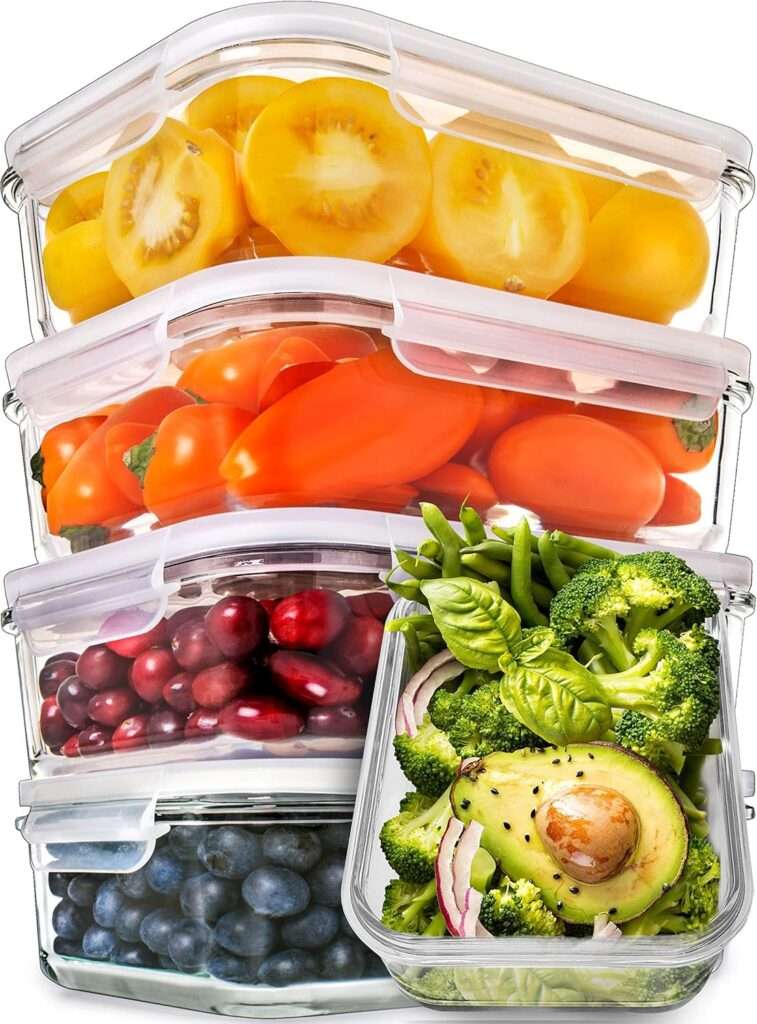
These containers are created using borosilicate glass. They are safe for the oven and microwave. What’s more, each comes with a BPA-free locking lid.
They seal tight and the whole set is easily stackable in your fridge. Glass meal prep containers are a simple but one of the most effective solutions for batch lunches, and they keep your food fresh, too.
2. Mueller Austria Onion Chopper Pro – Best for Fast, No-Mess Dicing
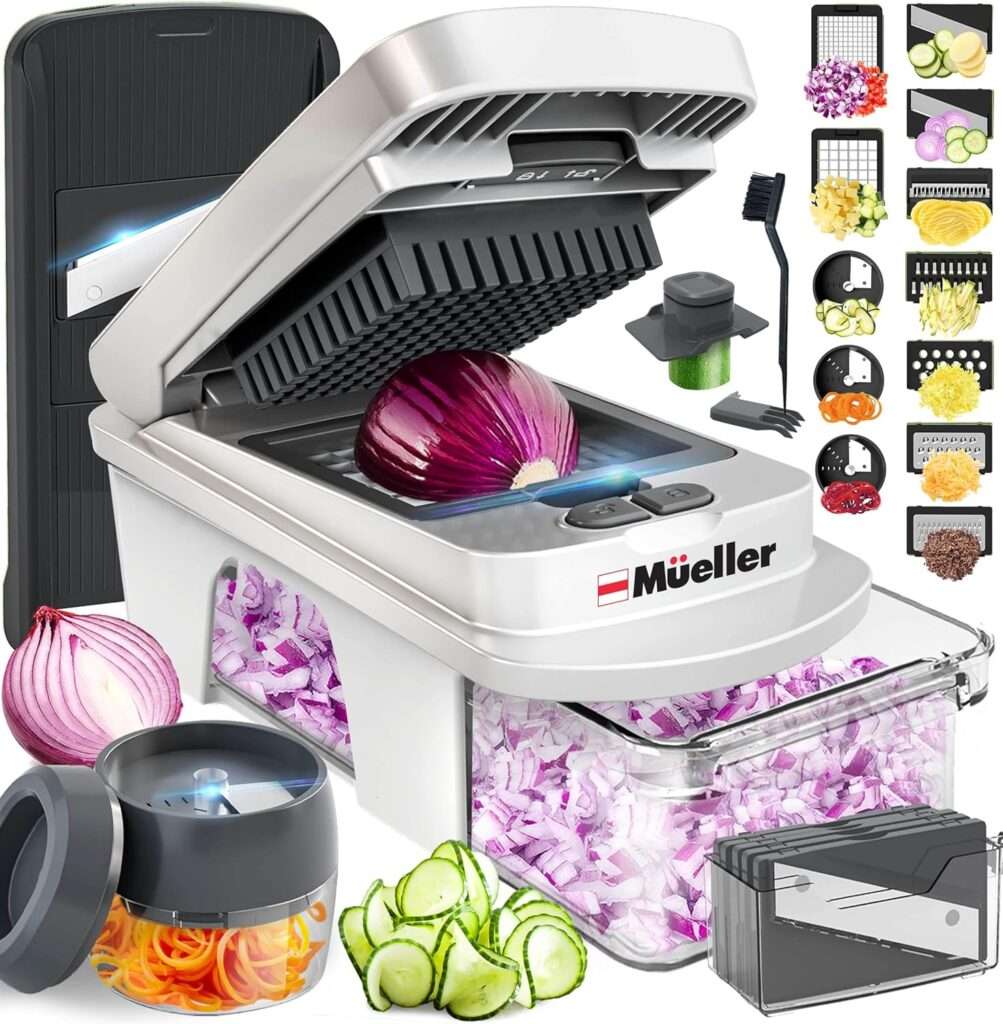
This tool fixes the annoyance of creating a mess on your cutting board when chopping vegetables. This Mueller chopper uses a simple push-down mechanism for dicing any kind of vegetable into uniform pieces without tearing.
It’s especially helpful if you prep meals in bulk or want to save time without going for the processor every time. Plus, cleanup’s not bad. The catch tray holds everything and the parts are dishwasher safe.
3. OXO Good Grips 11-lb Digital Scale – Best for Portion Control Without Guesswork
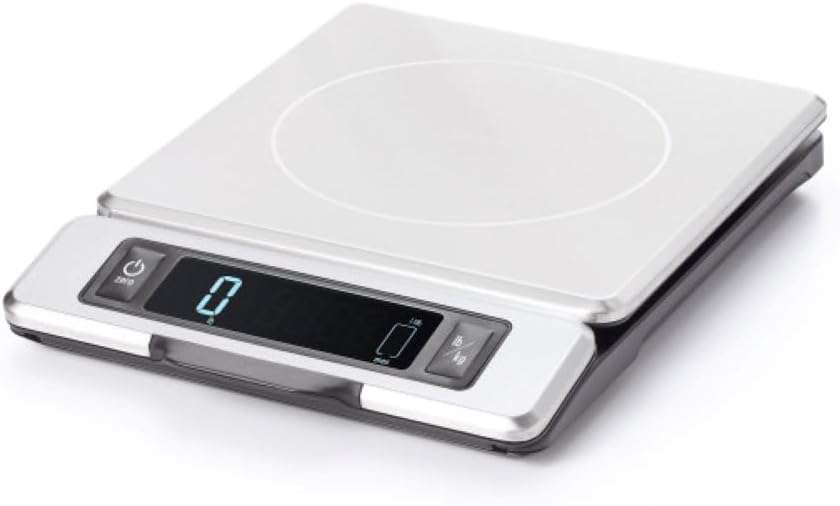
Eyeballing portions is a fast track to under-seasoned meals or calorie math that doesn’t add up. This digital scale gives you precise weights down to the gram and it’s responsive enough to keep up while you’re mid-prep.
The surface is smooth and easy to wipe down and it comes with a zero/tare function so you can measure without juggling bowls. This is one of the best tools if you’re tracking portions and macros, or if you like to bake often – helping you match the recipe to perfection.
4. Misto Refillable Oil Sprayer – Best for Light, Even Oil Without the Chemicals
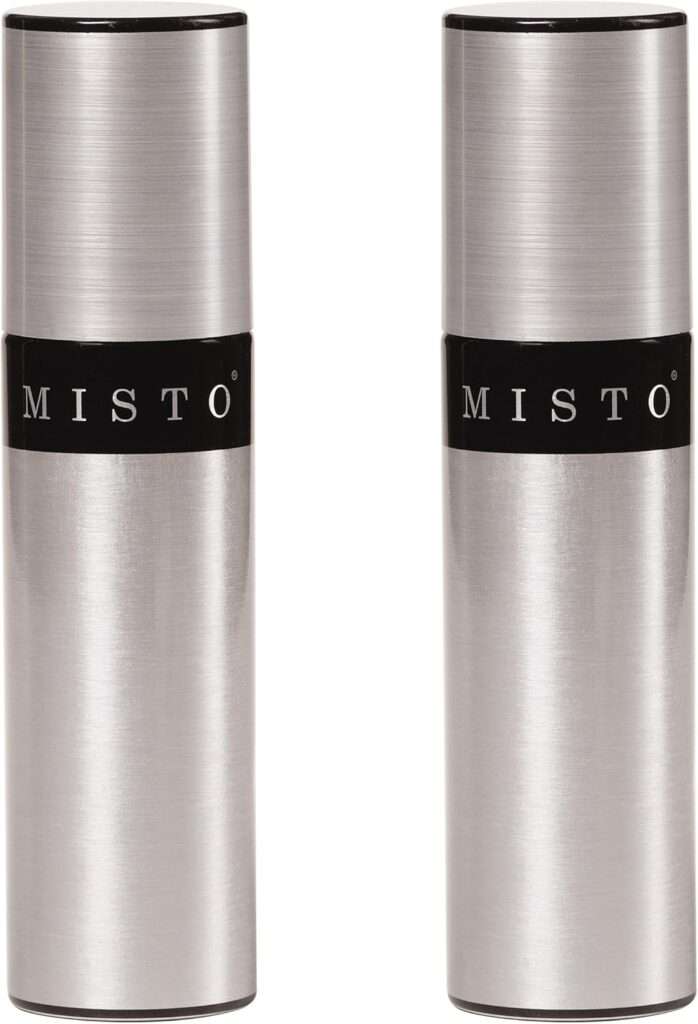
Tired of using more oil than you mean on your food or pan? The Misto sprayer is the solution. It’s basically a manual pump bottle for your olive oil, avocado oil or whatever you’re using. No propellants, no aerosols – just a clean, controlled spray.
You fill it up halfway, pump the cap to build pressure and it sprays a fine mist that actually coats food evenly. It’s perfect for roasting vegetables and greasing pans with no offer. It also helps getting a crispy finish in the air fryer without drowning things. Plus, it looks clean on the counter and doesn’t feel like a cheap kitchen gadget.
5. Brieftons 7-Blade Spiralizer – Best for Turning Vegetables into Actual Meals
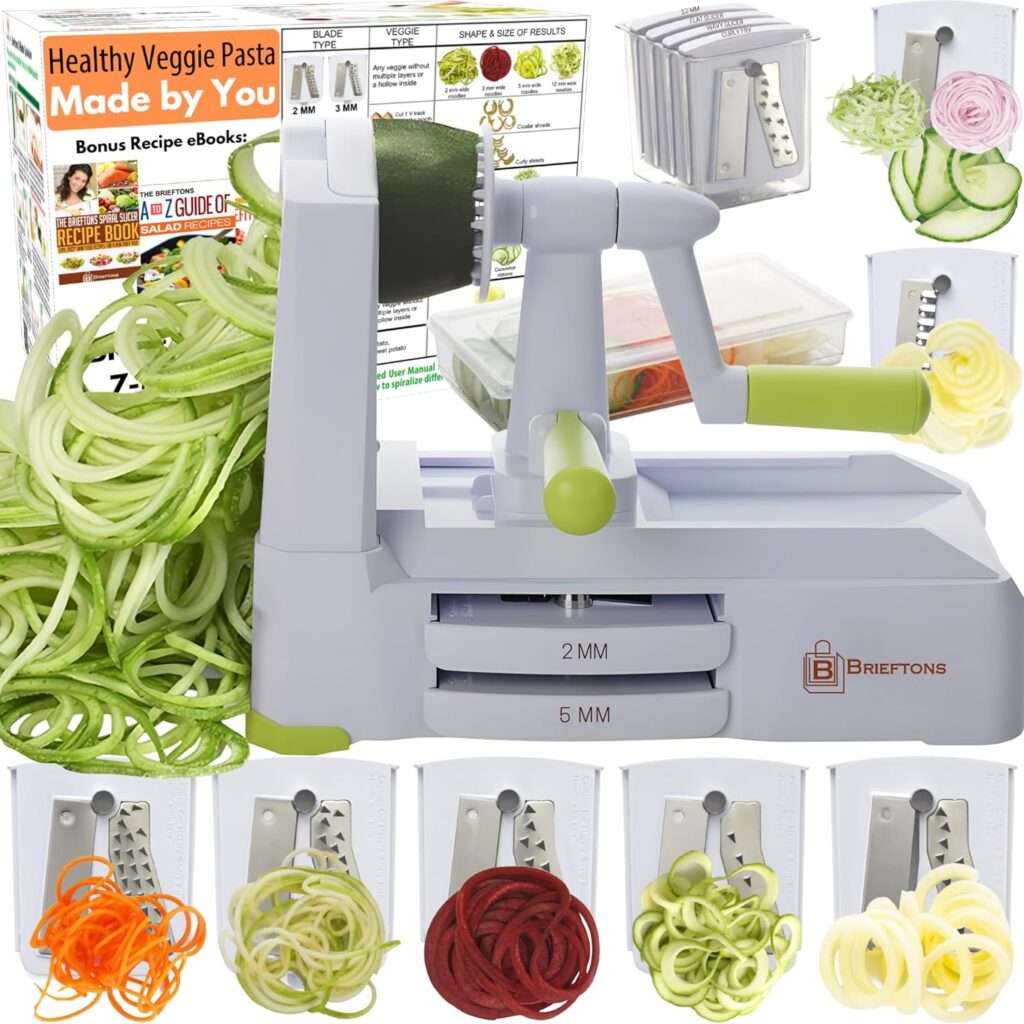
This thing turns solid, boring vegetables into something you’d actually want to eat. And unlike the tiny spiralizers that slip all over the place, the Brieftons model stays locked down with suction feet, and it handles tougher veggies without wobbling.
It comes with 7 blade styles, which is probably more than you’ll ever use – but the straight and shredder blades alone are worth it. If you’re low-carb, paleo, keto or just tired of rice, this will add variety fast. Storage is easy, cleanup is manageable and the build quality doesn’t feel flimsy.
6. Rubbermaid Brilliance Food Storage Set – Best for Leakproof, Work-Friendly Meals
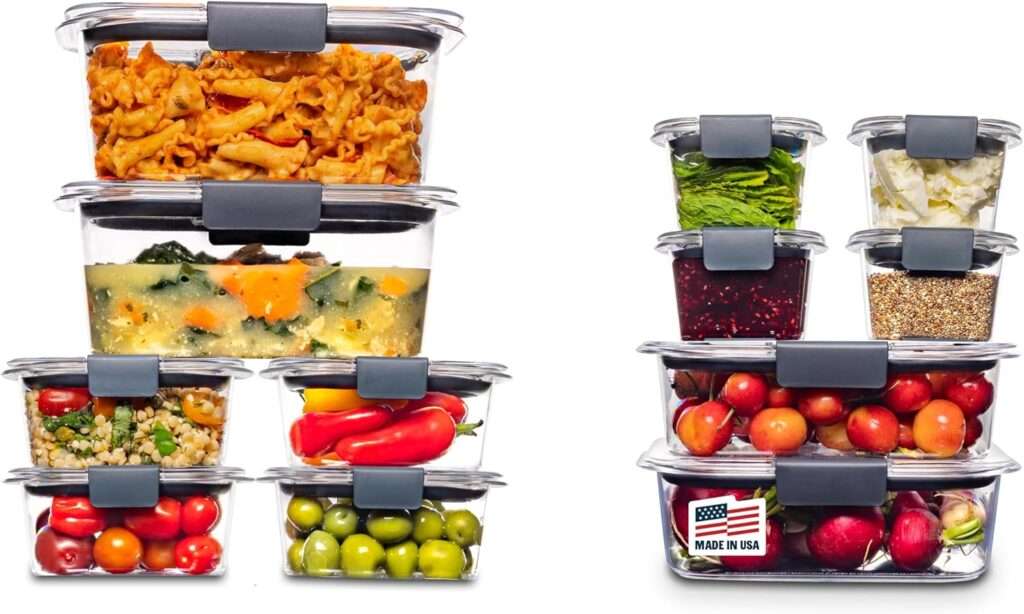
You know those flimsy containers that snap shut but still leak chili in your backpack? These aren’t that. The Brilliance line has airtight latches and ultra-clear Tritan plastic that doesn’t stain, warp or trap smells. You can put soup, salad dressing or marinated chicken in here and it won’t explode in your bag.
They’re microwave safe (with built-in steam vents in the lids), dishwasher safe and stack like puzzle pieces in your fridge. If you take lunch to work or prep meals days in advance, this is one of the best upgrades you can make.
7. Fullstar Vegetable Slicer & Grater – Best for Speed-Slicing Without a Mandoline Injury
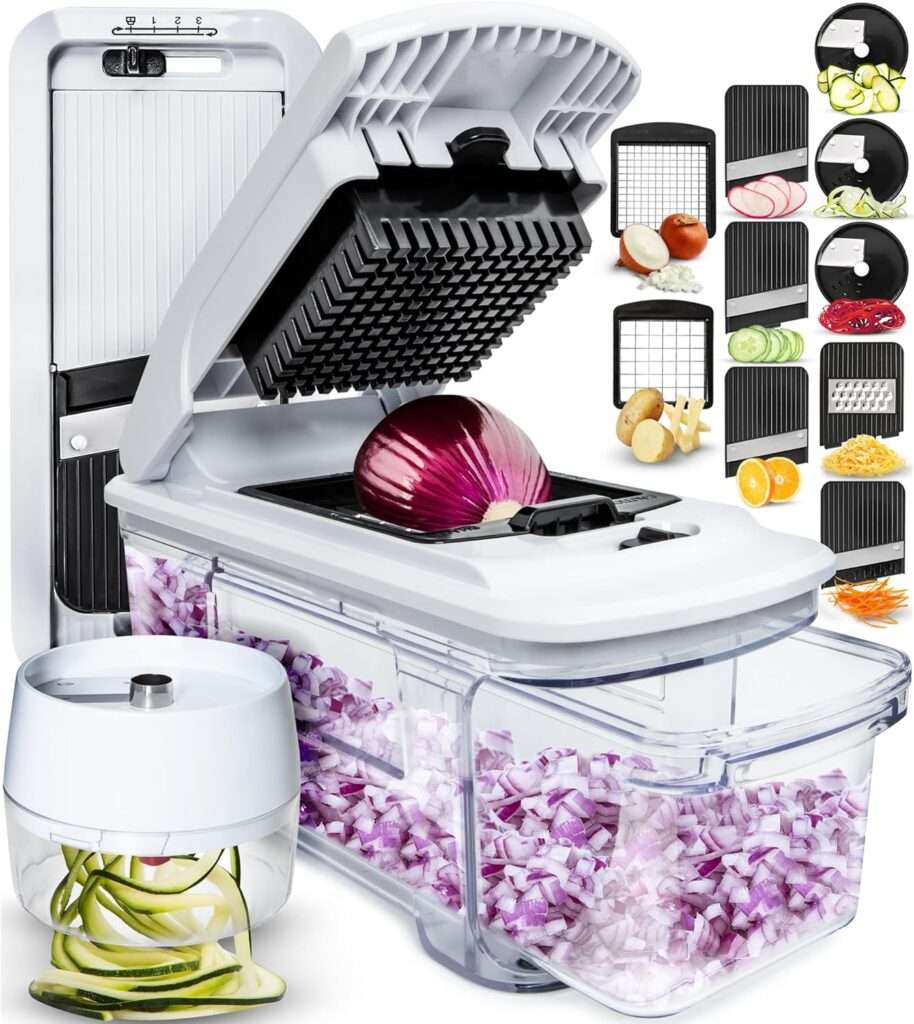
Do you avoid slicing onions altogether because it’s just a pain? This Fullstar set solves all dicing problems. It’s a compact all-in-one slicer, grater, and chopper with interchangeable blades that cover everything from julienning carrots to spiralizing zucchini.
The base has a built-in container to catch what you slice, and the hand guard is very effective – not one of those afterthoughts you throw away. This is one of the best tools for knocking out a ton of prep at once without cluttering your counter.
Key features include: 4 stainless steel blades, a catch tray with lid, non-slip base, and blade organizer. If you’re short on time but want to prep veggies fast (without sacrificing efficiency), this one’s a workhorse.
8. FineDine Stainless Mixing Bowl Set – Best for Batch Cooking and Big Prep Sessions
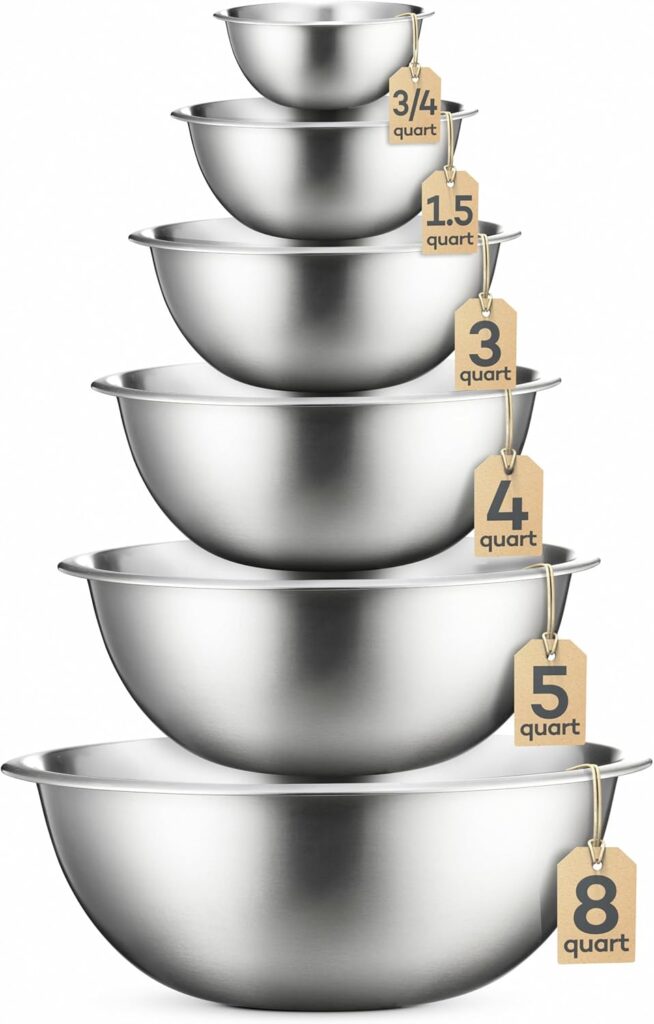
Every kitchen needs a solid mixing bowl set, and this one from FineDine covers everything from tossing salads to storing marinated meats. You get six stainless steel bowls in increasing sizes, all with tight-fitting lids and measurement markings inside.
They’re lightweight but durable, and they won’t stain and aborb odors. These are great for prepping ahead – mix in the bowl, and throw it in the fridge. The nesting design also saves a ton of cabinet space, which matters more than you think when your gear starts to pile up.
9. Instant Pot Duo 6-Qt 7-in-1 – Best for One-Pot Batch Cooking
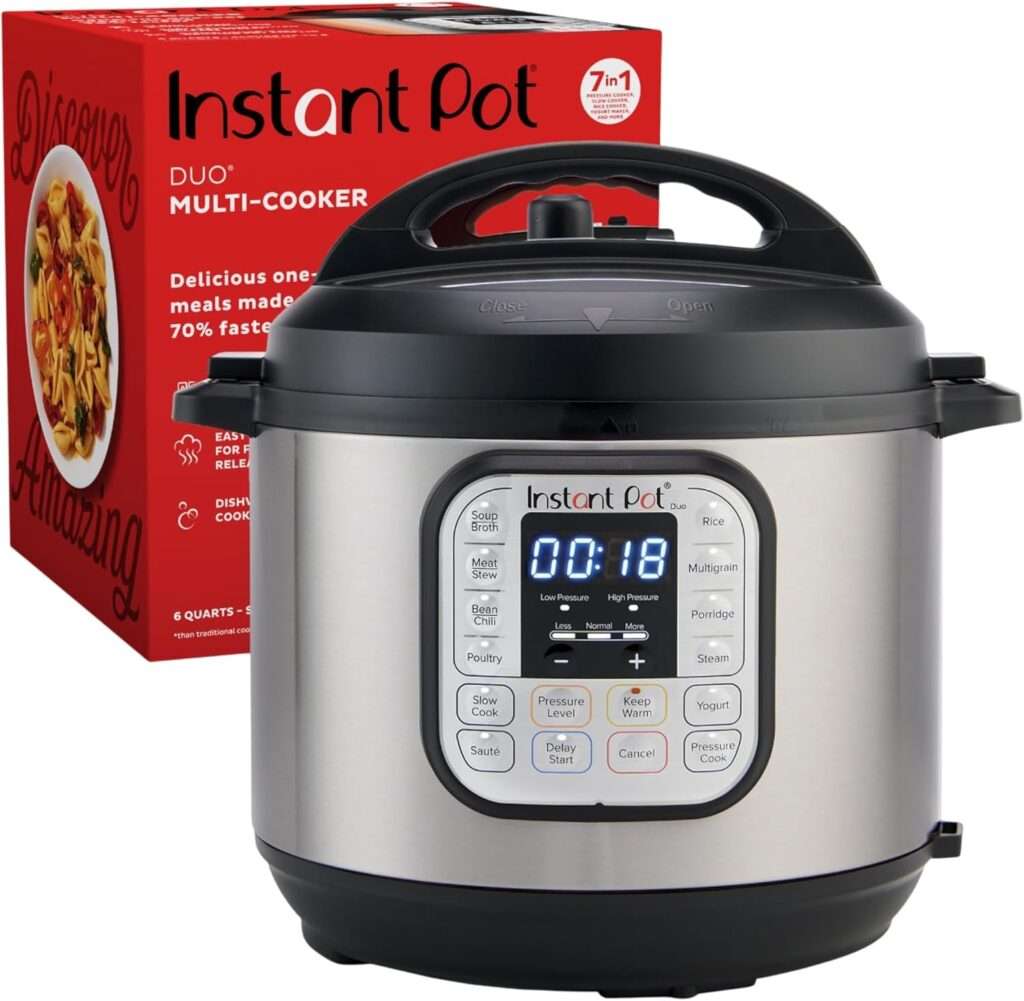
The Instant Pot isn’t trendy anymore – it’s essential. If you’re prepping proteins, grains, beans, soups or shredded chicken for the week, there’s no faster or more hands-off way to do it. This model pressure cooks, slow cooks, steams, sautés and even makes yogurt if you’re feeling brave.
What makes it perfect for meal prep is the volume it handles. Cook five days of lunches in one go, set it to keep warm and forget about it.
Stainless steel interior, intuitive controls and a massive online community full of recipes and hacks make it a no-brainer for prepping smarter.
10. Stasher Reusable Silicone Bags – Best for Plastic-Free, Freezer-Ready Storage
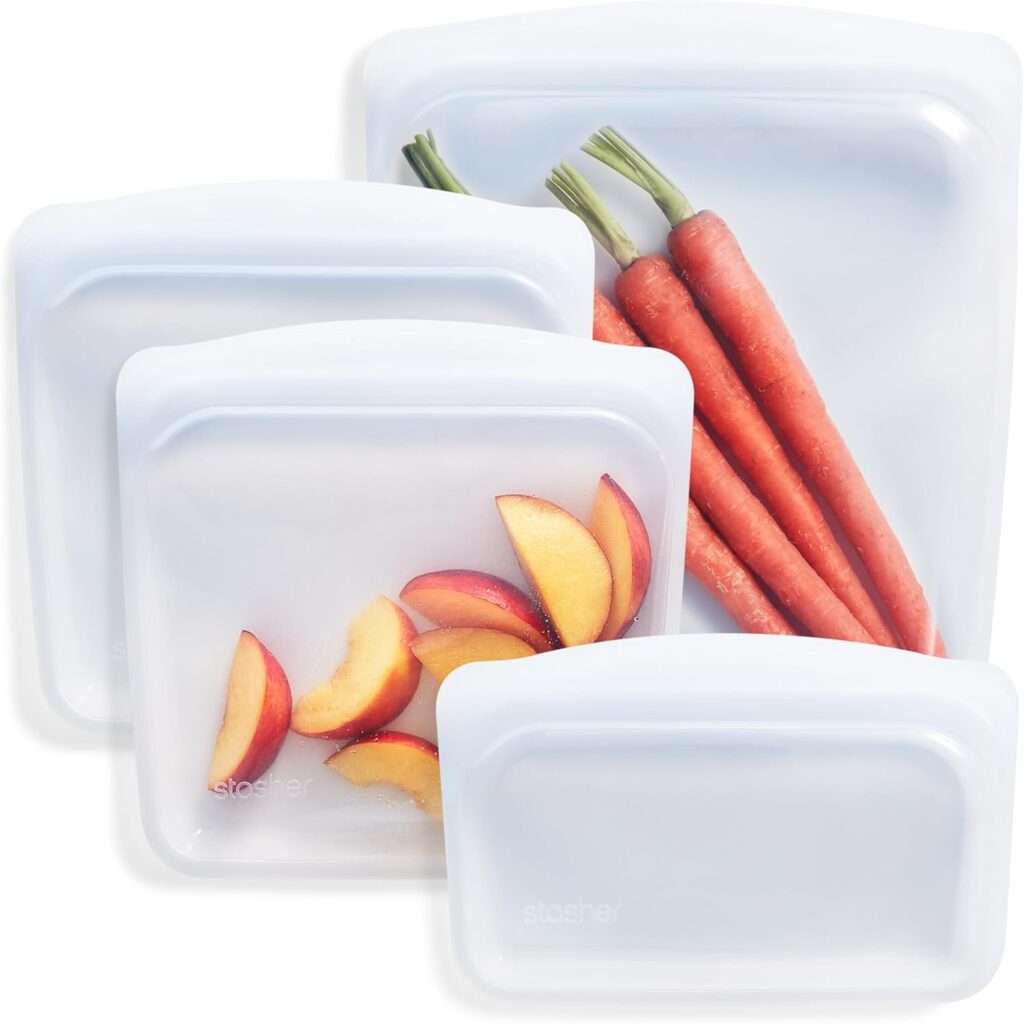
Not cheap but they last forever and replace single-use ziplocks with something tougher, safer and better looking. Made from 100% food-grade silicone they seal with a pinch-lock system and can go from freezer to microwave to dishwasher without melting or warping.
Use them to store chopped produce, portioned meals, smoothie ingredients or anything else you’d put in a disposable bag. They don’t stain or smell and are soft but sturdy – so they’ll survive backpack lunches and freezer deep dives just fine.
How I Picked The Best Kitchen Tools for Meal Prep
There’s a lot that goes into picking the right kitchen gear for meal prep. Real world testing and living with this stuff is the deciding factor, such as prepping for the week on a Sunday night, or trying to pack a decent lunch in five minutes. Moreover, I emphasize figuring out which tools actually help and which ones just take up space.
Here’s our main criteria I used during testing:
Efficiency
I looked for things that sped up repetitive tasks such as chopping, portioning, sealing, and storing. It’s things you want to do as fast as possible without a second thought, which is the key to a successful meal prep.
I once tried to dice six onions by hand after work, and it took me 40 minutes. The next day, I ordered an onion chopper – and after it arrived – I haven’t looked back since.
Durability
Lots of gadgets work great once then they’re forgotten once I realize how much work it takes to maintain them. If a tool cracks or warps in a weird way, I left it out of our final list. I tested everything to make sure it stands the test of time, through normal kitchen use.
I give preference to kitchen tools that are made from solid materials, such as borosilicate and stainless steel.
Storage
Meal prep takes long enough as is, so I don’t intend on having you spend extra time cleaning gear that’s complicated to use and maintain. I focused on tools that clean up easily, either in the dishwasher or in the sink.
I remember buying a slicer that had seven detachable blades and a separate hand guard that snapped in but never actually stayed, and I only used it once. The cleanup took longer than making meals, which is another lesson learned for me.
Value
I made sure price is somewhat of an afterthought, focusing on quality, efficiency, consistency, and durability. I looked for gear that solves multiple problems, holds its own over time, and doesn’t scream “this is an impulse buy”.
Every item here includes kitchen gear that I reached for day in and day out, and consistently used for weeks on end. Why? It made meal prep genuinely easier, not fancier.
Related: See our full test notes and review criteria here > How I Rate.
Quick Comparison Table – Best Kitchen Tools for Meal Prep
| Product | Best For | Price |
| Prep Naturals Glass Meal Prep Containers | Safe, stackable food storage | Check on Amazon |
| Mueller Austria Onion Chopper Pro | Fast, consistent chopping | Check on Amazon |
| OXO Good Grips 11-lb Digital Scale | Accurate portion control | Check on Amazon |
| Misto Refillable Oil Sprayer | Light, even oil coating | Check on Amazon |
| Brieftons 7-Blade Spiralizer | Veggie noodles & garnishes | Check on Amazon |
| Rubbermaid Brilliance Food Storage Set | Leak-proof lunch packing | Check on Amazon |
| Fullstar Vegetable Slicer & Grater | Multi-function slicing | Check on Amazon |
| FineDine Stainless Mixing Bowl Set | Bulk prep & storage | Check on Amazon |
| Instant Pot Duo 6-Qt 7-in-1 | Batch cooking proteins & grains | Check on Amazon |
| Stasher Reusable Silicone Bags (Starter Set) | Freezer-safe, plastic-free storage | Check on Amazon |
Meal Prep Tools That Didn’t Make the List (and Why)
Some meal prep essentials turn out to be not-so-essential once you get to use them in practice. Here’s a few popular meal prep tools that didn’t make the cut, and the reasons why:
❌ Mandolines Without Safety Guards
These slice well but more often than not they’re an accident waiting to happen. A good slicer should save your time, rather than cause injuries.
Why it missed the list: Too many people injure themselves or stop using them after a messy cleanup session.
❌ Smart Kitchen Scales That Sync With an App
I learned that you don’t need Bluetooth in order to measure some oats. While techy scales sound cool for a smart kitchen, the majority of people (myself included) end up using them like any other digital scale – minus the app updates.
Why it missed the list: Meal prep kitchen gear should simplify your routine. A basic scale does the same job faster and cheaper.
❌ Drawer-Filling Meal Prep Kits with 20+ Attachments
These sets try to do everything from spiralizing, to slicing, juicing, shredding and separating eggs. But you guessed it, they end up doing none of it well. Plus, you spend a portion of your time looking for the right piece when you get down to meal prepping.
Why it missed the list: Too many pieces, but way too little consistency. Tools that overpromise usually underdeliver.
❌ Single-Use Gadgets (Egg Cookers, Rice Cookers, Salad Spinners)
Unless you make eggs or rice every single day, then these tools are difficult to justify. They take up too much space and end up collecting dust and stains. Your space could be better used towards more versatile equipment.
Why it missed the list: Versatility is key when building a meal prep essentials loadout, whereas single-use tools rarely pull their weight.
❌ Nonstick Containers That Claim to Be “Microwave Safe”
Cheap plastic warps quickly especially when you reheat meals that contain oil or a sauce. And there’s the concern of chemical leaching as well.
Why it missed the list: You’re better suited with glass or food-grade silicone if you’re serious about healthy meal prep habits.
❌ Pre-Portioned “Meal Prep Container Sets” with Dividers
Yes, these look great in ads and sound great in theory. However, the dividers don’t seal individually, which means that your sauce will leak across comparments.
Why it missed the list: They’re fine for dry snacks, but if you want real, practical meals, then I advise you to go for stackable containers with proper lids.
The best meal prep tools for beginners aren’t clever or flashy. Instead, they’re the ones that you use every week without thinking.
Meal Prep for Beginners: What You Actually Need
I don’t advise buying everything at once, because you don’t need 17 healthy kitchen gadgets with suction cups and fancy LED timers in order to start your meal prep. What you need is gear that works and doesn’t fight you.
Here’s your basic loadout:
- Glass containers – Should be stackable and oven-safe. They shouldn’t warp after a round in the microwave.
- A decent vegetable chopper – Because dicing onions with a dull knife is a pain. Get a chopper – it’s one of the best investments if you actually eat veggies.
- Digital scale – If you’re watching portions, this will turn any guess work into immediate clarity. It helps with baking and protein tracking to boot.
- Mixing bowls with lids – If you want to prep and store in the same container, then consider mixing bowls with lids on them.
- One-pot cooker – This is a Godsend as it can prep multiple meals at once. You don’t have to buy an Instant Pot either, just anything that lets you walk away while your food is cooking. A small, one-person sized air fryer gets the job done quite well, too.
Why Glass and Silicone Beat Plastic for Meal Prep
Yeah, plastic is an easy option, but then you’re faced with smells and the container will warp in no time. Most cheap plastic warps fast, and it stains a lot. Odds are, it will start leaking before you know it. The FDA recommends using microwave-safe plastic containers to avoid warping or chemical leaching when heating food.
Glass and silicone is more expensive but it’s worth it. Like buying quality shoes, a firm mattress, or Egyptian-cotton thread sheets. Pay now, thank yourself later.
In glass, you can cook and store forever. You can microwave it, freeze it, and it still remains clean. You won’t face smells, weird colors or BPA paranoia. Moreover, glass stacks well in your fridge, which matters if you’re trying to meal prep for days in advance.
Silicone bags are yet another game-changer in my opinion. However, avoid the flimsy zip-top ones that tear fast. Go for thick, reusable silicone bags that have pinch-lock seals. These don’t leak and can survive boiling water and freezing temperatures to boot.
The switch isn’t about being eco-friendly. It’s about being practical over time, and it will help you actually stick to your meal prep plans for more than a few days or a week. You are not buying aesthetics or fancy products just for the sake of being fancy. You are trading your cash for your sanity.
The Best Tools for Specific Meal Prep Styles
Everybody cooks differently. That’s simply the reality. You may be trying to avoid takeout, you’re on a keto diet, or you’re simply tired of making dinner every night. There is no one-size-fits-all list, regardless of your motivation. Getting tools that fit your actual eating habits is what counts.
Keto or Low-Carb?
Three items will transform your life if you’re trying to reach your macros or avoid carbs: a food scale, a spiralizer, and a mediocre air fryer. The spiralizer is quicker than chopping, and transforms boring veggies into entertaining spirals like carrot ribbons, and zucchini noodles. Without the need for mental acrobatics, the scale helps you control accurate portions. And the air fryer? It will be your secret to getting crispy protein without drowning it in oil.
Batch Cookers, This Way
If your entire ethos is “meal prep once, coast the rest of the week,” you absolutely require a monstrous set of mixing bowls with lids, a pressure cooker and some heavy-duty freezer bags. You’ll be making chili, rice, shredded whatever, and portioning it out like a meal prep wizard. Bowls make it way easier to mix, store and stack, and the cooker? Throw stuff in, walk away, and you’re done. Not attractive, but it works.
Lunch Warriors
This is non-negotiable: leak-proof containers. Toss in a cooler bag, in case your work fridge is a lost cause (seriously, what is that smell?). Transparent containers are clutch – they show you what’s in there, so you’re not playing “guess the science experiment” with Friday’s lunch.
Smoothie People, Unite
Pre-portion ingredients in silicone bags or portion cups for your smoothies. Throw in frozen fruit, nut butter, a handful of spinach, protein powder – whatever you’re feeling. Freeze ’em. And then when you are not entirely awake, dump the bag into the blender and be off. No mess, no excuses, and you get to believe for a moment that you’re killing the health game.
Really, choose what you like best. You don’t receive get a special award for owning the nicest kitchen equipment – just the satisfaction of not opening a box of cereal for dinner, yet again.
Pro Meal Prep Tips That Save Time (and Sanity)
Let’s not overcomplicate this. Meal prep isn’t about being perfect – it’s about making your life easier during the week. These tips are from real routines, not Pinterest boards, and they align with healthy meal prep habits outlined by actual nutrition experts.
- Pick one prep day and stick to it
Sunday night or Monday morning works for most. You want it consistent. The point is to make it automatic — same time, same place, same containers. - Batch your proteins
Cook your chicken, beans, or ground beef all at once. Use a pressure cooker or anything that lets you set it and walk away. Saves more time than people realize. - Pre-chop your vegetables
Dice everything ahead and store it in glass or silicone containers. You’ll thank yourself when it’s 7 PM and all you need to do is dump and cook. - Label everything
Use removable freezer labels. Write what’s inside and the date. Sounds small, but it stops mystery leftovers and wasted food. - Use clear containers
If you can’t see it, you’ll forget it. Glass or clear plastic helps you stay on top of what’s prepped and what’s left. Stacking matters — don’t let your fridge turn into Jenga. - Always have backups
Freeze one or two extra meals every week. Silicone bags are great for this. When life hits hard and takeout tempts you, you’ll have something real and ready.
Maintenance Tips for Long-Lasting Meal Prep Tools
Meal prep gear isn’t cheap, and nothing’s worse than dropping $40 on something that’s dead in two months. You don’t need a cleaning obsession to keep your tools alive – just a few habits that’ll save you money and headaches.
Don’t Let Food Sit
The longer food stays stuck in a chopper, slicer, or spiralizer, the harder it is to clean. Rinse it after use. You don’t need to do a full spa session, just knock off the gunk before it dries and turns into concrete.
Skip the Dishwasher (Sometimes)
Yeah, I know it says “dishwasher safe.” But a lot of gear warps or dulls faster in the heat, especially anything with blades, or rubber seals. When in doubt, a quick rinse by hand is safer for the long term – especially for lids and chopper blades.
Oil the Hinges, Not Your Food
Got a foldable slicer or something with moving parts? A tiny drop of cooking oil on the joints keeps it smooth. Just wipe off the excess. You don’t want it dripping onto your next batch of zucchini.
Dry Everything – Especially Lids
Moisture is the enemy of longevity. Before you throw lids or tools back in the drawer, let them fully air dry. Otherwise, you’ll end up with moldy smells or warped pieces that never seal right again.
What to Avoid When Buying Meal Prep Gear
There’s a lot of kitchen gear out there that seems like a good idea – but it fails in practice. We’ve all bought something with high hopes, only to tuck it away in the back of a cabinet a week later. Meal prep tools are no exception here, as experience tells us.
Here’s what I avoid now:
Gadgets with too many pieces
If your tool has a dozen parts and too many specialty blades then it’s not worth it. In fact, anything that makes you hesitate using it because it’s annoything to clean or reassemble is unlikely to be used. A tool that you won’t reach out for out of instinct every time is one that I don’t recommend.
Containers with unreliable lids
This one’s non-negotiable because a container that leaks or pops open in your bag can ruin everything. I advise you look for lids that actually lock down or seal tight with a silicone ring. It’s best to skip anything with vague “snap closures” that don’t tend to stay put.
Cheap, thin plastic
Most plastic warps after a couple microwave sessions, holds onto odors, and starts cracking within a month. You’ll notice it especially with tomato-based meals or anything oily. Once it starts to stain or bend out of shape, you stop trusting it – and then stop using it.
Overhyped “smart” gear
You don’t need a Bluetooth-enabled measuring cup. If a gadget requires a charge or an app, best to just walk away. Meal prep needs to be fast and repeatable, not dependent on syncing your phone to see if the rice is done.
Tools that are a pain to clean
This is probably the #1 dealbreaker. If it takes longer to clean than it saves during prep, it’s not worth it. That grater with food permanently wedged in the corners? That slicer that has to be fully disassembled every time? Not gonna last in your rotation.
You want tools that make things easier, not just fancier. If it slows you down, or it just clutters your counter for no reason, then skip it.
Healthy Cooking Tool Alternatives: What to Use Instead
Not every tool in your kitchen is working in your favor – especially when it comes to health. Here’s a quick breakdown of what you might be using, and what you should be using instead.
| Instead of… | Try this | Why |
|---|---|---|
| Teflon or PTFE-coated pans | GreenLife Ceramic Non-Stick Cookware | Ceramic coatings are free of PFAS/PFOA and don’t flake into your food. |
| Disposable plastic bags | Stasher Reusable Silicone Bags | Silicone doesn’t leach and lasts longer. Plus it doesn’t end up in landfills. |
| Spray-on oils or aerosol cans | Misto Oil Sprayer | You control what goes in, and avoid propellants, additives, and mess. |
| Cheap non-stick baking paper | AmazonBasics Silicone Baking Mats | Reusable, non-toxic, and genuinely non-stick without the throwaway waste. |
| Random plastic food containers | Prep Naturals Glass Containers | No plastic smell, no leaching, and they handle heat without warping. |
| Manual calorie counting (or guessing) | GreaterGoods Food Scale | Makes portion control consistent and dead simple with 1g precision. |
How to Organize Your Meal Prep Tools Efficiently
Having the right gear is only half the battle. If it’s buried behind a bunch of clutter or lives in a drawer you avoid opening, it won’t matter how useful it is — you’re still going to reach for the same old pan or whatever’s already sitting on the counter.
I’ve been there more times than I’d like to admit. Bought something I was excited about, used it once, then let it drift into that kitchen limbo where forgotten gadgets go to collect dust. The problem usually isn’t the tool. It’s that it’s never where it needs to be when I need it.
Here’s what helped:
Keep your go-to tools in plain sight
This sounds obvious, but it’s the thing that made the biggest difference for me. When I can actually see the gear I use most – like my scale, chopper, or set of glass containers – I’m more likely to grab them without second-guessing or digging around.
Group things that get used together
I started putting meal prep stuff into one section: containers, labels, backup lids, silicone bags, even freezer markers. It doesn’t have to look nice, just needs to be together in the same spot. That way, when it’s time to prep, I’m not walking back and forth pulling things out of six different cabinets.
Find better spots for the awkward gear
Some tools are shaped weird or don’t fit anywhere naturally. Spiralizers, mandolines, and oversized bowls fall into this category. I gave them their own small shelf off to the side. They’re not front and center, but I don’t have to go on a scavenger hunt to find them either.
Do small cleanouts once in a while
You don’t need to Marie Kondo your kitchen, but it’s worth opening a drawer every so often and asking yourself, “Do I even use this thing?” If the answer’s no and it hasn’t moved in weeks, I move it somewhere else – or let it go entirely. The less noise you have, the easier it is to spot what actually matters.
Lid management matters more than expected
I used to pile all my lids together thinking it was fine – until I had to match one in a rush. A small rack or bin where lids stand upright made things easier. It’s not fancy, but it saves time and keeps the container drawer from looking like a junkyard.
At the end of the day, you want a setup that works with how you cook – not against it. If your tools are easy to reach and simple to put back, you’ll actually keep using them. And that’s what makes the whole meal prep thing stick.
How to Build a Meal Prep System That Actually Works
A working system for meal prep really comes down to repeatability. The idea is to be able to do it consistently, week in – week out. That’s how you know you’re on the right track.
- Identify your core meals. Prep those ingredients first, for example one protein, one grain, some chopped vegetables, sauces and toppings. Then it’s best to stick to what you actually eat.
- Use proper sized containers. Make sure they match your fridge space, and portion size. In my opinion, clear glass works best because you can see what’s on the inside.
- Set up your tools so they’re ready at will: This means that whatever tools you have, such as your chopper, mixing bowl, scale, and storage are easy to grab and clean. The less obstacles you have the easier it will be to prep again next time.
- Make a short checklist. Make sure its based on your routine. It could be something simple like: “cook one grain”, “roast some vegetables in a tray”. Label them and store them. When you have clear instructions set by yourself, you’ll be faster every time, eliminating thinking and doubt.
A real system isn’t about efficiency for the sake of it, but about reducing the number of small annoyances that build up and stop you from doing it altogether.
How to Upgrade Your Meal Prep Without Buying More Gear
Most people think they need better equipment to make meal prep easier. In reality, small tweaks to how you use what you already have go a lot further.
- Block off one consistent day or evening to prep. Because your routine is much more important than motivation. When your meal prep routine is built into your week, then you stop waiting for the perfect mood or free window to get started.
- Set up your kitchen so that the tools you actually use are easy to reach. That includes your go-to knife, cutting board, containers, mixing bowls, and anything else you use each time. If something is frequently stored at the back of your cabinet, then you’re unlikely to use it.
- Stick to batch cooking for your base ingredients. You don’t need five different meals. Don’t go wild, just cook some once and store it smart. You can mix it up during the week. One tray of roasted vegetables and a couple protein options can carry most meals, especially if you’re cooking for one.
- Label your containers. It prevents guessing games later in the week and helps you avoid waste.
- And finally, don’t let dishes pile up. Prepping is faster when your tools are already clean and ready to go. A quick rinse as you move through each step will save you time and effort the next time around.
Meal prep gets easier not by spending more, but by removing the friction that slows you down.
🔗 Related Guides:
Start Small and Build Your Plan Over Time
Meal prep isn’t about having the trendiest gear or filling every drawer with clever tools. It’s about finding the few pieces of equipment that genuinely save time, cut down on cleanup, and make your week a little easier.
Every product on this list made the cut because it actually pulled its weight. Not in some staged kitchen with perfect lighting, but in real routines, with real deadlines, and a very real pile of dishes waiting after dinner.
You don’t need much to get started. Just a few reliable tools, a bit of consistency, and something to store leftovers in that won’t leak into your bag. Everything else is optional.
Start small. Stick with it, and then upgrade as you go. That’s the move.
Meal Prep Kitchen Tools – FAQs
Browse commonly asked questions related to tools for meal prep.
What are the most essential tools for meal prep?
At the very least, you’ll need a solid set of containers, a chopping tool, and something that can cook more than one portion at a time.
How do I store meals for the week without them going bad?
Use airtight containers and label them with what’s inside and the prep date. Keep anything you’ll eat within 3-4 days in the fridge, and freeze the rest. Meals with cooked grains, roasted veggies, or proteins like chicken hold up well, especially if they’re sealed properly and stored in glass or silicone.
How many meals should I prep at once?
Most people prep 4 to 6 meals at a time – enough to get through the workweek without having to cook every night. It depends on your fridge space and how repetitive you’re okay with things getting. It’s better to start small and build a habit than burn out after one mega prep session.
Can I use plastic containers instead of glass?
Sure, but just know you’ll likely replace them sooner than later. Most plastic containers warp in the microwave, stain easily from sauces like curry or tomato, and don’t hold up well over time. Glass costs more upfront, but it holds its shape, doesn’t trap smells, and works across the freezer, oven, and microwave without a fuss.
Do I need fancy gear to start meal prepping?
Not at all. Most people start with what they already own – a basic knife, some containers, and a way to cook a few meals in one go. What matters is that your tools don’t slow you down or frustrate you. Once you’ve got the habit down, you’ll figure out what’s worth upgrading.
What’s the best way to reheat prepped meals?
That depends on the food. Soups, grains, and most one-pan meals reheat well in the microwave, especially when they’re in glass. If something was crispy to begin with – like roasted veg or baked protein – then using an air fryer or oven for a few minutes can bring it back. Either way, skip the plastic if you’re heating anything above lukewarm.
